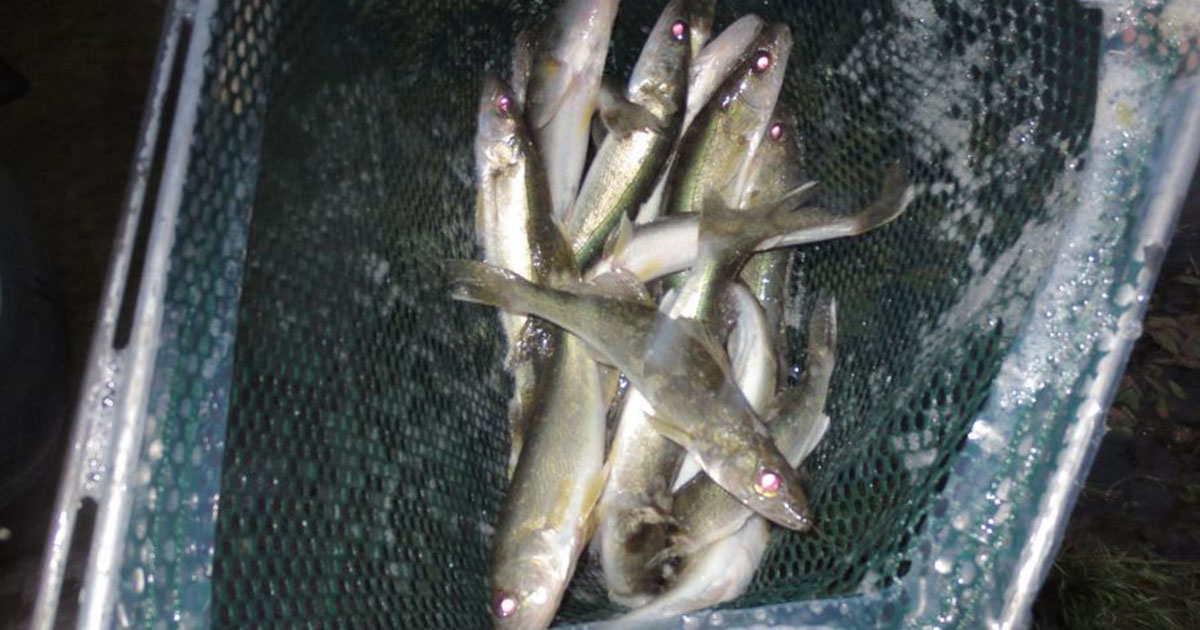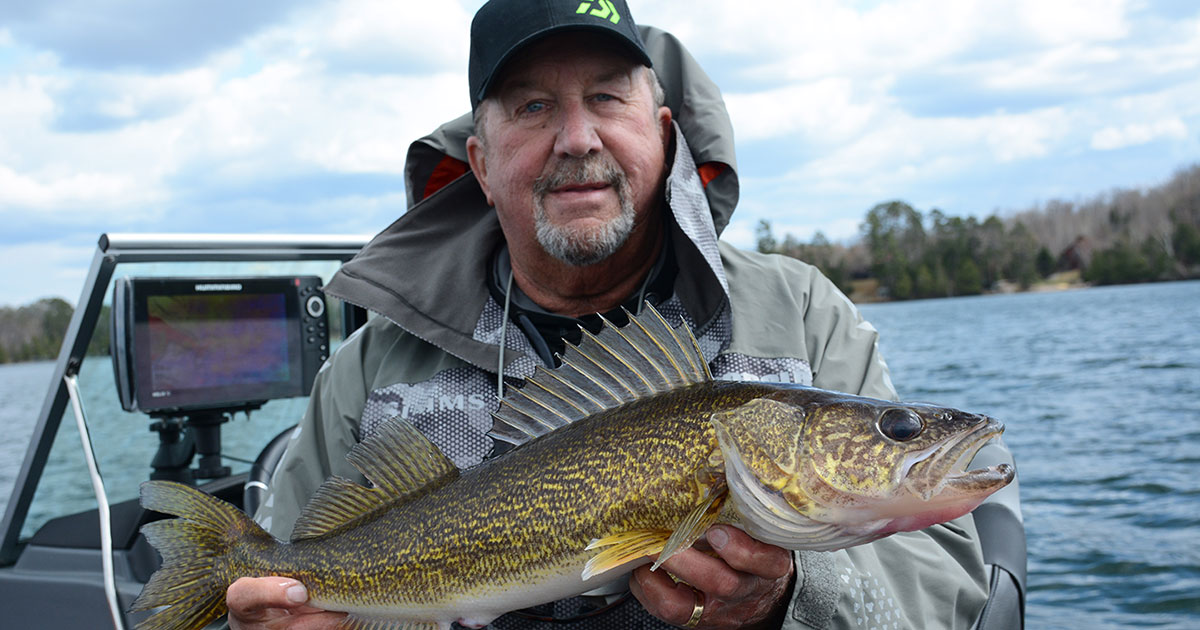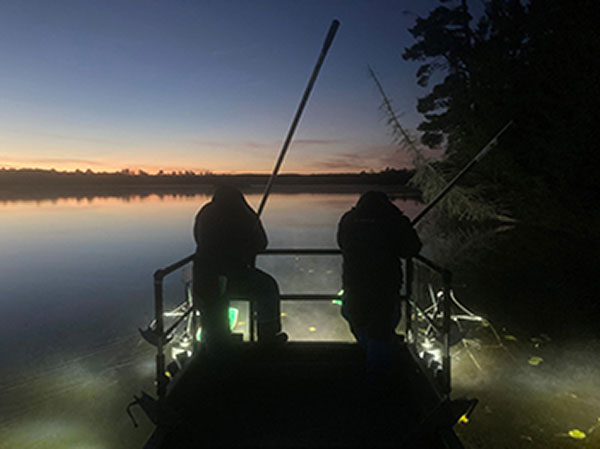- Details
By Louie Stout

Northern Indiana waters, including the St. Joseph River in South Bend, received a quality walleye stocking in October.
Those fish came from a commercial fish rearing company and were purchased by the Michiana Walleye Club and the Indiana DNR.
Indiana also used commercial hatchery fish to stock Clear Lake in Steuben County, Sylvan Lake and Winona Lake at 10 fish per acre.
More walleyes will be stocked in northern Indiana lakes in the coming days. Those fish were raised by the DNR at their Fawn River Fish Hatchery.
Indiana biologist Matt Horsley said that 11,760 fall finglering walleyes purchased from Gollon Bait and Fish Farm in Wisconsin went into the St. Joe. The purchased walleyes were in good shape and ran 7 to 11 inches.
Indiana and the walleye club stock the river every other year. On years when Indiana doesn’t stock, Michigan stocks it’s portion of the river up and downstream from the Hoosier state.
The DNR pays for its portion of the river stocking with funds it receives from I&M Electric for potential fish loses.
Previous river stockings have been made at Maggie’s Landing, but this year they were planted upstream near County Line Road.
“Survival of previous stockings at Maggie’s has been dropping so we decided to try stocking farther upstream where there is more vegetation to offer the young fish more protection from predation,” said Horsley. “I will go survey the river next fall to evaluate overall survival of this year’s stocking.”
Those walleyes that Indiana raised at Fawn River will help supplement other northern Indiana lakes. Those lakes scheduled to get those fish –dependent upon the supply – include Pretty, Wall, Loon, Big Turkey, Stone and Pine, Maxinkuckee, Dewart, Fish, Crooked and George lakes.
Horsely and the DNR are dependent upon angler feedback regarding walleye successes throughout the season.
“I love getting info from anglers about whether they are catching walleyes – or not,” he said. “That’s just one of the ways we evaluate the fisheries to determine if we need to look at different options.”
You can contact him by email at mhorsley@dnr.in.gov or by phone, 269 829 6241.
- Details
Ego Fishing Report

It’s that time of year again. Kids are back at school, football’s started, and fish will soon be putting on the feed for the long, cold months ahead. And while the pull for the avid outdoorsman or woman can be to ready for birds, bucks, field, and forest, serious walleye anglers know it’s also time to be on the water.
Fish are starting to make moves; the best walleye fishing takes place when waters hit the upper to mid-50s. This is when they begin aggressively targeting baitfish like shad, perch, and fall-spawning tullibees (cisco), often roaming shallow from dusk and throughout the night putting on the feed.
Location, Location, Location
Fall days can be epic, as long as you’re in the right place. Expect autumn walleyes to hold near main lake points, drop-offs, and structures like rock piles and gravel bars near deeper water where they can ambush prey and rest to metabolize food.
Moving water is also a fall magnet, with walleyes chasing migrating baitfish into adjoining creeks and rivers on lakes.
But, as mentioned, come nighttime, anticipate walleyes moving into as little as 2-8 feet of water near shorelines, especially windswept shores. On rivers, you will find the same phenomena, with walleyes intercepting food along shallow rock, creek inlets, river bends, wingdams, and riprap.
Troll Right Now
Although it’s fallen by the wayside with FF sonar, trolling is still an incredibly effective way to catch walleyes, especially now with water temps sliding into the 60s and down into the upper 50s. You can still use your electronics, but rather than sniping individual fish, look for schools of baitfish cruising the open basins and either longline or use leadcore to pull crankbaits or spinners, the latter with a minnow instead of a ‘crawler, something a lot of anglers don’t do anymore.
- Details
MDNR Report

Be on the lookout for Michigan DNR personnel conducting nighttime walleye recruitment surveys from late September to mid-October.
These surveys are an important tool for fisheries managers to determine whether walleye that hatched in the spring (known as young-of-year) hatched in the wild or were stocked, as well as how many of those fish are present in an area. This information about the status of young walleye in lakes helps the DNR make informed management decisions.
Using electrofishing boats, crews will survey shallow areas near the shoreline of lakes at night with the goal of capturing young-of-year walleye. Walleye prefer cooler, deeper areas of lakes during the day but move into shallow, nearshore areas at night, making nighttime surveys more efficient. On larger lakes, two or more electrofishing crews using separate boats may operate at the same time to cover more area. The crews will work both on lakes that have been stocked with walleye and lakes that have not.
Biologists also will collect and keep a sample of young-of-year walleye from stocked lakes to determine whether the fish are primarily reproducing naturally or if young-of-year are from stocking. Many walleye that are stocked are marked with oxytetracycline, a chemical marker that can be observed within captured fish by using a microscope with an ultraviolet light source in a laboratory setting. In addition, modern genetic techniques that allow more accurate assessment of stocking success will be completed at Michigan State University on walleye tissue samples collected during some of these fall surveys.
Some surveys will be conducted collaboratively with tribal agencies, and tribal natural resource departments also will be conducting surveys independently of the DNR. In the Upper Peninsula, the U.S. Department of Agriculture’s Forest Service also will be collaborating on surveys and conducting independent surveys in the Hiawatha National Forest as part of an effort to create long-term datasets for a number of inland lakes managed for walleye.
Everyone is urged to use caution when fishing or on the water near electrofishing boats, and those wading will be asked to exit the water when a survey boat approaches and during electrofishing work. Crews will be using bright lights to illuminate the water around the boats and running generators on board, which may make it difficult to hear and speak with anyone on shore.
Learn more about how the DNR manages Michigan’s walleye fisheries at
- Details
By Louie Stout

The walleye bite is on big time on Lake Erie.
Just look at the kind of weekend Pat Kleppert, Zack Guerin (Marcellus, Mich.) and Dion Deans, a boat salesman at D&R Sports Center, had last weekend.
Shown here is an 8 pounder Dion boated while the group trolled Rapala Husky Jerks (fire tiger) on planer boards.
They were fishing out of Port Clinton, Ohio from Kleppert’s 20-foot Ranger 620. They targeted about 28 feet of water east of South Bass Island.
“The weather was challenging,” said Kleppert, a Rapala sales rep who lives in Jones, Mich. “There were a lot of boats out there.”
Kleppert said they had 13 walleyes Sunday that weighed 65 pounds and 5 Monday that weighed 29 pounds.
“I fished there before the guys showed up and had four fish over 8 pounds,” said Kleppert. “The fish were pre-spawn walleyes and the water temperature was 48 degrees. It was a lot of fun!”





